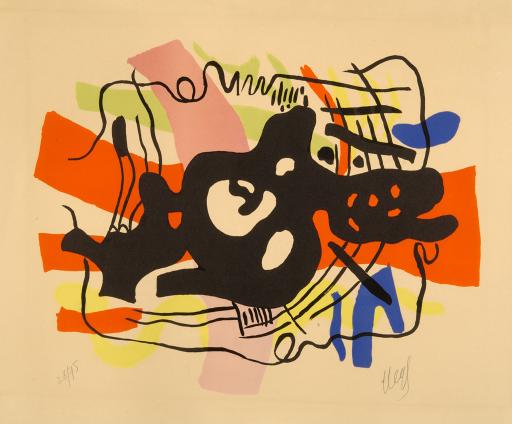La racine noire (The Black Root), Fernand Léger
Artwork Overview
Fernand Léger, artist
1881–1955
La racine noire (The Black Root),
1948
Where object was made: France
Material/technique: Arches® paper; color lithograph
Dimensions:
Image Dimensions Height/Width (Height x Width): 370 x 461 mm
Sheet/Paper Dimensions (Height x Width): 472 x 598 mm
Image Dimensions Height/Width (Height x Width): 14 9/16 x 18 1/8 in
Sheet/Paper Dimensions (Height x Width): 18 9/16 x 23 9/16 in
Mat Dimensions (Height x Width): 20 x 25 in
Image Dimensions Height/Width (Height x Width): 370 x 461 mm
Sheet/Paper Dimensions (Height x Width): 472 x 598 mm
Image Dimensions Height/Width (Height x Width): 14 9/16 x 18 1/8 in
Sheet/Paper Dimensions (Height x Width): 18 9/16 x 23 9/16 in
Mat Dimensions (Height x Width): 20 x 25 in
Credit line: Gift from the John J. Talleur and Ann Talleur Collection
Accession number: 1991.0277
Not on display
If you wish to reproduce this image, please submit an image request


